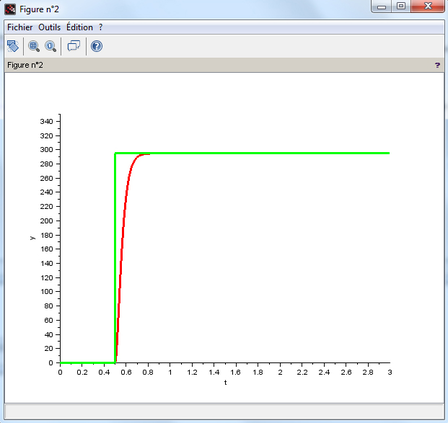
The following Scilab instructions, for the wheel radius calculation, are saved into a Scilab function ( symbol2radius.sci). In the second example we are going to calculate the engine power, based on the engine speed and torque information, and plot it side by side for both vehicles.
#Scilab constant how to
For a complete explanation about this, read the article How to calculate wheel radius. First example is going to be a functions which reads the size marking of a tire and converts it into a numerical value (wheel radius). Now that we have all the data in Scilab, we can go ahead and process it. The same applies for the v2 data structure variable. Further, we can check the content of the v1 structure by typing a dot. This way we can track and make sure that we have the right data imported. As you can see, we use the data identifier ( S) in a conditional if loop to distinguish between string data and numerical data.Īt the end, with the function clear(), we delete the intermediate variables from the Variable Browser and keep only the relevant ones.Īll the instructions above can be entered in a Scilab script ( *.sce) and run, to get the data imported.Īfter the data has been imported, by typing the variable v1 in the Scilab Console, followed by Enter key, we can display the content of the structure:Īs you can see, the data fields of the v1 data structure are the same with the identifiers used in the *.csv file. The for loop is used to parse the data and create two data structure variables: v1 for the first vehicle (Fiat) and v2 for the second vehicle (Renault). The function csvRead() reads all the content of the inputData.csv file and stores it as string in the variable data. This is useful to be able to spot any warning/error messages and also see the impact of the instructions in the Variable Browser. The first two functions clear() and clc() are used to delete all the existing variables from Variable Browser and clean the Scilab Console. To import the content of the file we are going to use the following Scilab instructions: clear()ĭata=csvRead("inputData.csv","string") Įxecstr(strcat( "])) Several columns, for other vehicles can be added, if needed.Īll the data in the table above is going to be stored in a file called inputData.csv. The fourth and fifth columns are containing the actual data. This information is going to be used when importing the data in Scilab. The third column describes what kind of data the line contains: N for numeric and S for string. The second column contains the variable name of the corresponding data, which is going to be used also in Scilab as variable name field. The first column contains the description and unit of the data. The data is summarise in the table below. For this particular example we are going to use LibreOffice Calc to edit and save the *.csv file. The data represents the powertrain parameters and road load from two vehicles, a Fiat and a Renault. In this example we are going to use a *.csv file to define our data, which is going to be imported in Scilab and processed. The use of the comma as a field separator is the source of the name for this file format.Ī data file in *.csv format can be easily imported in *.xlsx or *.ods format, or read into the table editors (Excel or Open Office), edited and saved back into *.csv format. Each record consists of one or more fields, separated by commas.

A *.csv file stores tabular data (numbers and text) in plain text. A *.csv file is a text file in which a comma, is used to separate data values. There are several tools which allow table data handling, the most common being Microsoft Excel ( *.xlsx) and Open Office/LibreOffice Calc ( *.ods).Ī common way of keeping table data accessible between different platforms can be done by using comma-separated values ( *.csv ) file format.


Engineers, scientists, accountants and many other people are using tables to keep track and analyse data. Using tables is a convenient way to deal with data.


 0 kommentar(er)
0 kommentar(er)
